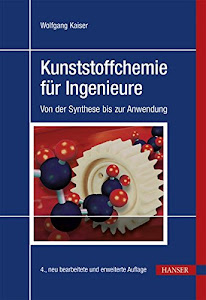
Kunststoffchemie für Ingenieure: Von der Synthese bis zur Anwendung
Kategorie: Backen, Alte Kochbücher, Desserts & Süßspeisen
Autor: Susann Probst
Herausgeber: Rainer Wittkamp, The German Kitchen
Veröffentlicht: 2019-07-17
Schriftsteller: Kochen und Verzaubern, Disney
Sprache: Gujarati, Vietnamesisch, Ungarisch, Schwedisch, Katalanisch
Format: epub, pdf
Autor: Susann Probst
Herausgeber: Rainer Wittkamp, The German Kitchen
Veröffentlicht: 2019-07-17
Schriftsteller: Kochen und Verzaubern, Disney
Sprache: Gujarati, Vietnamesisch, Ungarisch, Schwedisch, Katalanisch
Format: epub, pdf
Polyaddition – Wikipedia - Polyaddition (auch Additionspolymerisation genannt) ist eine Polyreaktion, die über einzelne voneinander unabhängige Additionsreaktionen Polymere (Kunststoffe) bildet. Polyaddition erfolgt als Stufenwachstumsreaktion über Moleküle mit niedrigen Polymerisationsgraden, also Dimere, Trimere und Oligomere, die untereinander neue Addukte bilden.
Polycaprolactam – Wikipedia - Polycaprolactam (Polyamid 6, PA6, als Handelsmarke Perlon) ist ein Polymer aus der Gruppe der Polymer wurde erstmals 1938 von Paul Schlack ( Farben) synthetisiert, um die Eigenschaften von Nylon 6,6 zu reproduzieren, ohne das geltende Produktionspatent zu verletzen.. Herstellung. Polyamid 6 entsteht durch ringöffnende Polymerisation von ε-Caprolactam.
Commodity plastics - Wikipedia - Commodity plastics or Commodity polymers are plastics produced in high volumes for applications where exceptional material properties are not needed (such as packaging, food containers, and household products). In contrast to engineering plastics, commodity plastics tend to be inexpensive to produce and exhibit relatively weak mechanical properties.
Polyethylene - an overview | ScienceDirect Topics - PE is a member of the polyolefins class, which also have various types of PE, depending on density of polymer type. PEs densities are relatively low when compared to other conventional polymers; the values range between 0.916 and 0.940 g/cm 3 for LLDPE and 0.840–0.970 g/cm 3 for HDPE. Generally, PEs has not only good processability but also shows a remarkable water vapor barrier functions ...
[epub], [audiobook], [online], [pdf], [read], [goodreads], [kindle], [english], [free], [audible], [download]












0 komentar:
Posting Komentar
Catatan: Hanya anggota dari blog ini yang dapat mengirim komentar.